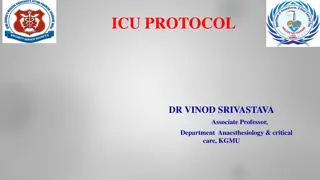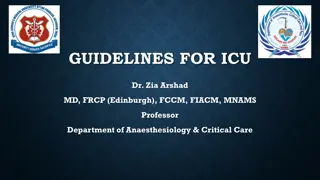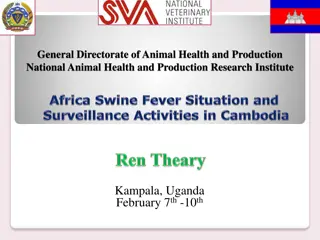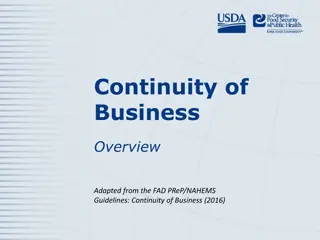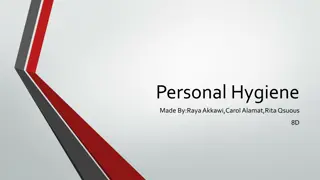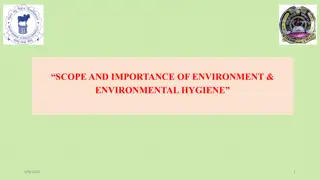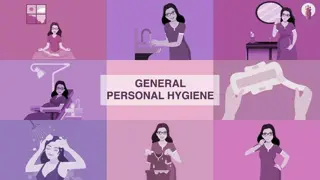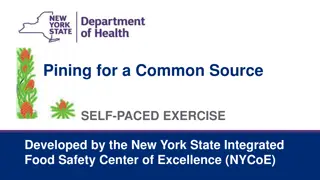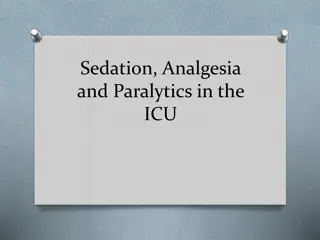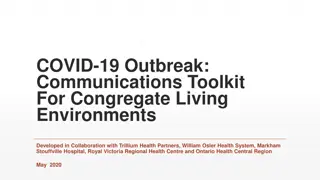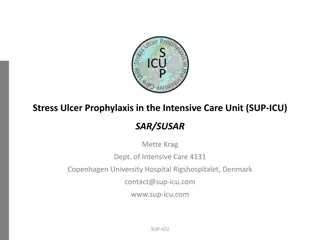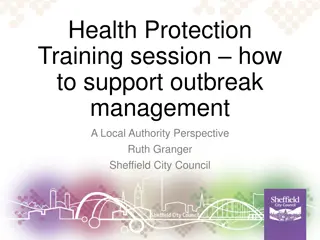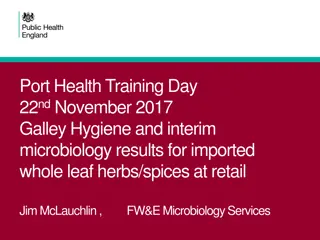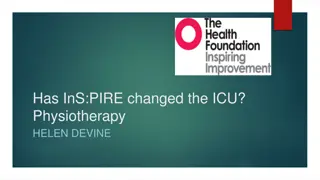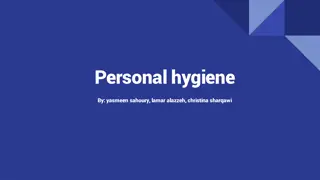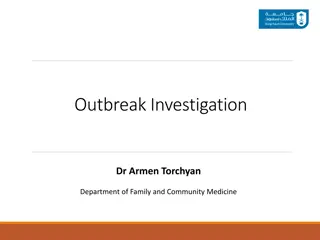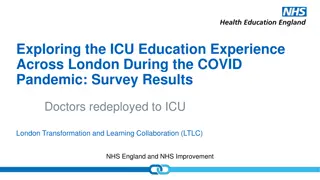Eradication of Burkholderia Cepacia Outbreak in ICU by Environmental Hygiene Approach
The study discusses the successful eradication of a Burkholderia cepacia outbreak in an Intensive Care Unit using a bundled environmental hygiene approach. Detailed investigations, including environmental cultures, clinical practices observation, and terminal cleaning procedures, were carried out. The results showed the effectiveness of the implemented strategies in eliminating the pathogen from high-touch surfaces and respiratory carriers. The study also highlighted the importance of cohorting patients and staff based on B. cepacia status, along with thorough environmental sampling.
Download Presentation

Please find below an Image/Link to download the presentation.
The content on the website is provided AS IS for your information and personal use only. It may not be sold, licensed, or shared on other websites without obtaining consent from the author.If you encounter any issues during the download, it is possible that the publisher has removed the file from their server.
You are allowed to download the files provided on this website for personal or commercial use, subject to the condition that they are used lawfully. All files are the property of their respective owners.
The content on the website is provided AS IS for your information and personal use only. It may not be sold, licensed, or shared on other websites without obtaining consent from the author.
E N D
Presentation Transcript
Eradication of a Burkholderia cepacia Outbreak in an Intensive Care Unit by a Bundled Environmental Hygiene Approach Elsa Santos-Cruz BSc, CIC September 16, 2015
Disclosures None
The Mount Sinai Hospital 1,171 bed Academic Tertiary Care Center on Upper East Side of New York City Heart, Abdominal Organ, and Bone Marrow Transplantation Includes 6 Adult Intensive Care Units 6.5 number of ICPs 3
Background 5 patients identified as colonized and/or infected with B. cepacia complex over a months Increased prevalence prompts and outbreak investigation Retrospective chart review Observation of Environmental Hygiene Observation of Clinical Practices 4
Burkholderia cepacia complex Multidrug-resistant Gram-negative bacilli 9 genomovars Found in soil, water, fruit, and vegetables Most commonly seen as a pathogen in cystic fibrosis patients Rarely identified at MSH 5
Terminal Clean Environmental cultures obtained from high-touch surfaces Respiratory surveillance samples obtained on admission to unit and weekly Patients relocated and ICU closed for terminal cleaning Unused medications and supplies were discarded Bedside storage cabinet was discarded Detail cleaning of all areas in the room using approved hospital disinfectant- Quaternary ammonia, and Bleach wipes, and the use of Ultraviolet germicidal irradiation 6
Repopulating the Unit Ventilators Replaced Patients and staff cohorted based on B. cepacia status Adenosine triphosphate (ATP) testing and post cleaning environmental sampling 7
Results Pre-cleaning environmental cultures revealed B. cepacia complex from multiple high touch surfaces 8
Room A: Respiratory Carrier Burkholderia cepacia group and other Gram-negative organisms Sink Surface Burkholderia cepacia group and other Gram-negative organisms Outside of Glove Box in Room Bedside Monitor Streptococcus spp. Coagulase-negative Staphyloccus WOW Keyboard Coagulase-negative Staphyloccus Top Shelf in Room 9
Room B: Clean Room Flat surface of ventilator Patient bed side storage cabinet inside of the top draw Burkholderia cepacia group and other Gram-negative organisms Gloves box outer surface, inside the patient s room. 10
6 14.0 closed ICU for terminal cleaning 12.0 5 rate per 1,000 patient days 10.0 4 Discontinued respiratory surveillance and ATP audit 8.0 3 # of cases 6.0 2 4.0 1 2.0 0 0.0 Number of Cases Rate per 1000 patient days
Results Two months after terminal cleaning, cohorting, & enhanced daily cleaning with ATP audit, no further cases of B. cepacia Audit and respiratory surveillance discontinued Continuation of enhanced daily cleaning and terminal cleaning at discharge with no further cases for 5 months 12
Conclusions Implementation of a daily and terminal cleaning bundle eliminated horizontal spread by eradicating the organism from the patient environment HAI MDRO incidence in the ICU decreased by 63% compared to the pre-cleaning period. 13
Future Directions Rolling out a similar bundled approach to tackle other MDROs 14
Thank You Gopi Patel,MD Nathaniel Bravo, RN, MA,CIC Michell Reyes, MT, CIC Roopa Kohli-Seth, MD Fran Wallach, MD 15


